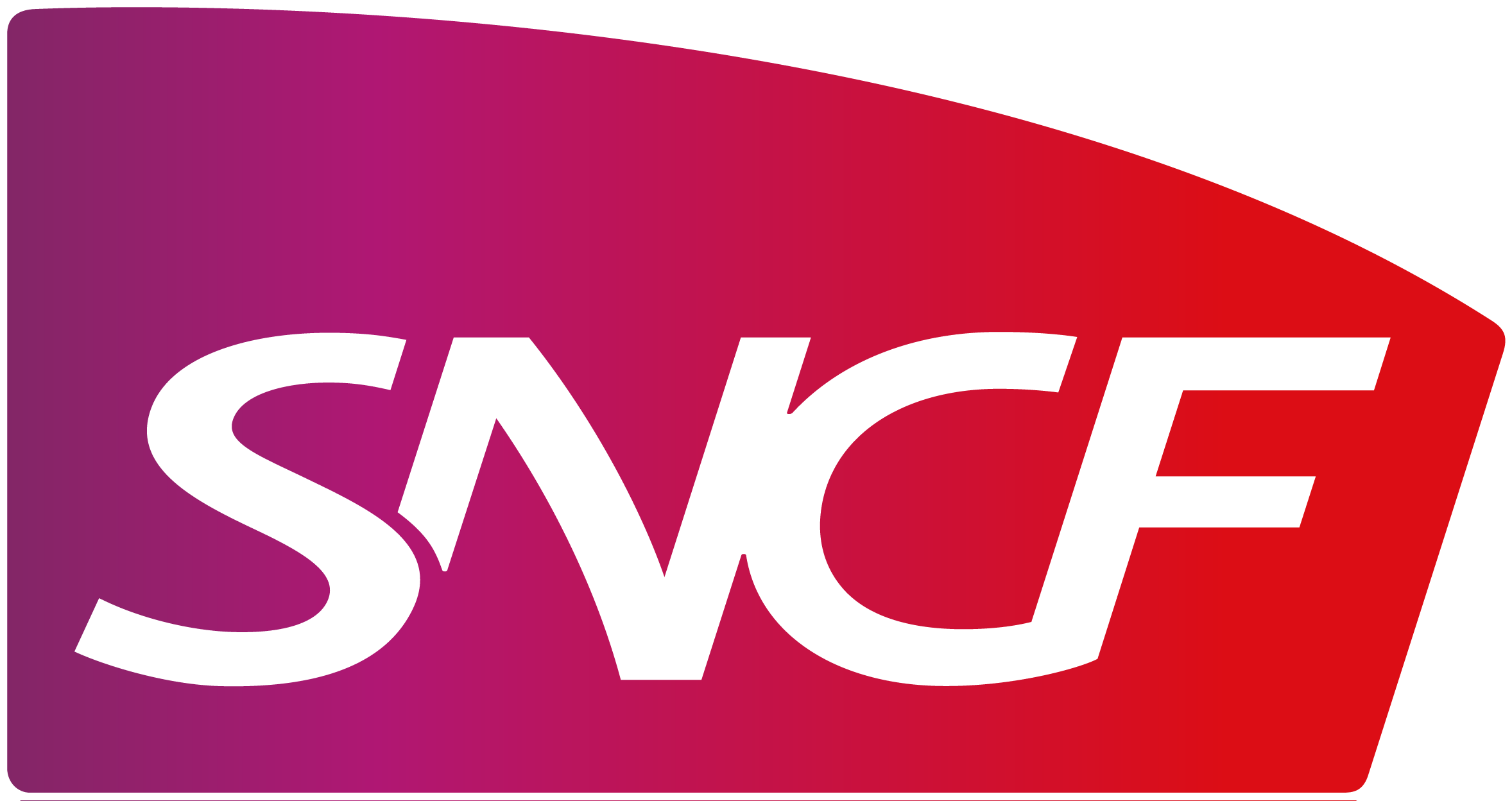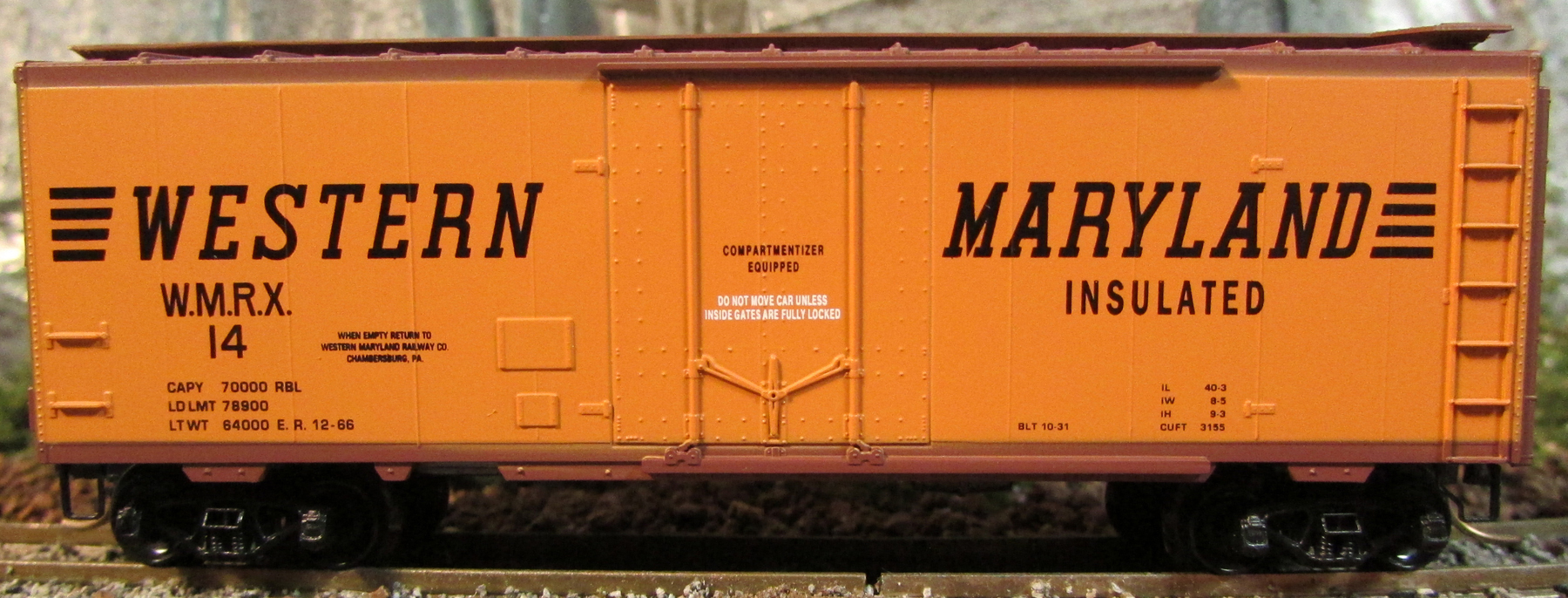Specific Item Information: The model with this road number is only available from train set #11488 and not sold as a separate item.
Model Information: Model introduced in 2008.
5-pole motor with flywheel. Power pick-up on all 4 axles.
White headlights and red taillights change with direction of travel.
5-pole motor with flywheel. Power pick-up on all 4 axles.
White headlights and red taillights change with direction of travel.
DCC Information: Accepts NEM 651 / NMRA 6-pin decoders for models produced up to 2011.
From 2013 on, accepts mTc14 14-plug decoder which is a specific format for Märklin, manufactured by Doehler & Haas:
- Trix 66840
- Rautenhaus digital RMX997C
From 2013 on, accepts mTc14 14-plug decoder which is a specific format for Märklin, manufactured by Doehler & Haas:
- Trix 66840
- Rautenhaus digital RMX997C
Prototype History: The BB 67000 is a series of 4-axle B'-B' diesel-electric locomotives commissioned by the French state railway SNCF between August 1963 and October 1975. A total of 424 units have been produced. According to practice of that time, SNCF was the main designer and the locomotives were manufactured by a variety of sub-contractors. These are multi-purpose locomotives, that can be used for passenger service as well as freight. They can be coupled between themselves in multi-unit, as well as with A1A-A1A 68000 locomotives, with which they share a number of components.
There are actually 4 sub-series with different characteristics:
BB 67000 - (67001 to 67124)
Initially ordered in December 1960, delivered between August 1963 and February 1968. Approx. 2/3 are still in service today, after modernization in either BB 67200 or BB 67300.
Power output: 2,000 hp
No heat generator for passenger trains, requiring a separate steam generator car.
BB 67200 - (67201 to 67280)
Modernization of BB 67000 between 1980 and 2007.
These are used for rescue and maintenance of way of the high-speed lines (TGV), and have been fitted with the TVM cab-signal unit of the TGVs, as well as with an automatic coupler type Scharfenberg.
BB 67300 - (67301 to 67391)
Initially ordered in December 1965, delivered between December 1967 and November 1969 for the 70 new units. 20 BB 67000 have been modernized to BB 67300 between 1975 and 1979 (67371 to 67391). They are currently being retired to the benefit of BB 67400 or more modern Diesel engines.
Power output: 2,400 hp
The excess power compared to BB 67000 was used for electrical heating of passenger trains.
BB 67400 - (67401 to 67632)
Initially ordered in January 1967, delivered between August 1969 and October 1975. Many were still in service in 2010, but they are progressively being retired.
Modernized version of BB 67300, with different bogies and suspensions.
The above description has been created specifically for TroveStar N scale database by Alain LM, as summary in English of the following French publication:
Source: Le Train. Encyclopédie du matériel moteur SNCF. Tome 7: Locomotives, locomoteurs et locotracteurs Diesel (2e partie). ISSN 1296-5537. Olivier Constant. Septembre 2010.
There are actually 4 sub-series with different characteristics:
BB 67000 - (67001 to 67124)
Initially ordered in December 1960, delivered between August 1963 and February 1968. Approx. 2/3 are still in service today, after modernization in either BB 67200 or BB 67300.
Power output: 2,000 hp
No heat generator for passenger trains, requiring a separate steam generator car.
BB 67200 - (67201 to 67280)
Modernization of BB 67000 between 1980 and 2007.
These are used for rescue and maintenance of way of the high-speed lines (TGV), and have been fitted with the TVM cab-signal unit of the TGVs, as well as with an automatic coupler type Scharfenberg.
BB 67300 - (67301 to 67391)
Initially ordered in December 1965, delivered between December 1967 and November 1969 for the 70 new units. 20 BB 67000 have been modernized to BB 67300 between 1975 and 1979 (67371 to 67391). They are currently being retired to the benefit of BB 67400 or more modern Diesel engines.
Power output: 2,400 hp
The excess power compared to BB 67000 was used for electrical heating of passenger trains.
BB 67400 - (67401 to 67632)
Initially ordered in January 1967, delivered between August 1969 and October 1975. Many were still in service in 2010, but they are progressively being retired.
Modernized version of BB 67300, with different bogies and suspensions.
The above description has been created specifically for TroveStar N scale database by Alain LM, as summary in English of the following French publication:
Source: Le Train. Encyclopédie du matériel moteur SNCF. Tome 7: Locomotives, locomoteurs et locotracteurs Diesel (2e partie). ISSN 1296-5537. Olivier Constant. Septembre 2010.
Road Name History: SNCF (Société Nationale des Chemins de fer Français; "National society of French railways" or "French National Railway Company") is France's national state-owned railway company and manages the rail traffic in France and the Principality of Monaco. SNCF operates the country's national rail services, including the TGV, France's high-speed rail network. Its functions include operation of railway services for passengers and freight, and maintenance and signalling of rail infrastructure.
SNCF employs more than 180,000 people in 120 countries around the globe. The railway network consists of about 32,000 km (20,000 mi) of route, of which 1,800 km (1,100 mi) are high-speed lines and 14,500 km (9,000 mi) electrified. About 14,000 trains are operated daily. The company has its headquarters in Saint Denis (93200), near Paris, 2 place aux Etoiles.
In 2010 SNCF was ranked 22nd in France and 214th globally on the Fortune Global 500 list.
It is the main business of the SNCF group, which in 2014 employed 245,763 people and had 27.2 billion € of sales in 120 countries.
From Wikipedia
SNCF employs more than 180,000 people in 120 countries around the globe. The railway network consists of about 32,000 km (20,000 mi) of route, of which 1,800 km (1,100 mi) are high-speed lines and 14,500 km (9,000 mi) electrified. About 14,000 trains are operated daily. The company has its headquarters in Saint Denis (93200), near Paris, 2 place aux Etoiles.
In 2010 SNCF was ranked 22nd in France and 214th globally on the Fortune Global 500 list.
It is the main business of the SNCF group, which in 2014 employed 245,763 people and had 27.2 billion € of sales in 120 countries.
From Wikipedia
Brand/Importer Information: Trix is a German company that originally made Trix metal construction sets. one of its co-founders was Stephan Bing, the son of the pioneer toy-maker industrialist Ignaz Bing. In 1935 the company began producing the electrically powered model trains that it became famous for, under the Trix Express label. Prior to the outbreak of World War II the Trix company produced a small range of fairly unrealistic AC powered three rail models running at 14 volts.
N gauge models under the Minitrix brand were made from the late 1960s mostly of European prototypes (German and British primarily). North American prototypes were also manufactured and marketed under the Aurora "Postage Stamp" brand; later these items were sold under the American Tortoise, Model Power and Con-Cor brands. Trix sometimes utilized North American consultants to aid in the design of this portion of the product line. The "Hornby Minitrix' brand was used in the 1980s for a short lived range of British outline models using the earlier product tooling.
Trix's owner in the 1980s and 1990s was Mangold, which went bankrupt in the late 1990s and Märklin purchased the assets in January 1997. In part, this purchase was a reflection of Märklin's need for added production capacity; Trix had been manufacturing certain items for Märklin in previous years. The purchase was also in response to the earlier purchase of the Karl Arnold company by the Italian company Rivarossi; Märklin were very keen to take over Trix market share in 2-rail H0 and especially Minitrix, until then Märklin had not marketed N gauge models. In 2003, Märklin introduced its first N gauge models under the well established Minitrix brand. A number Märklin H0 scale three-rail AC locomotives have also been introduced in two-rail DC versions under the Trix logo and many models are shared between the two brands.
From Wikipedia
N gauge models under the Minitrix brand were made from the late 1960s mostly of European prototypes (German and British primarily). North American prototypes were also manufactured and marketed under the Aurora "Postage Stamp" brand; later these items were sold under the American Tortoise, Model Power and Con-Cor brands. Trix sometimes utilized North American consultants to aid in the design of this portion of the product line. The "Hornby Minitrix' brand was used in the 1980s for a short lived range of British outline models using the earlier product tooling.
Trix's owner in the 1980s and 1990s was Mangold, which went bankrupt in the late 1990s and Märklin purchased the assets in January 1997. In part, this purchase was a reflection of Märklin's need for added production capacity; Trix had been manufacturing certain items for Märklin in previous years. The purchase was also in response to the earlier purchase of the Karl Arnold company by the Italian company Rivarossi; Märklin were very keen to take over Trix market share in 2-rail H0 and especially Minitrix, until then Märklin had not marketed N gauge models. In 2003, Märklin introduced its first N gauge models under the well established Minitrix brand. A number Märklin H0 scale three-rail AC locomotives have also been introduced in two-rail DC versions under the Trix logo and many models are shared between the two brands.
From Wikipedia
Item created by: Alain LM on 2017-02-11 04:39:52
If you see errors or missing data in this entry, please feel free to log in and edit it. Anyone with a Gmail account can log in instantly.
If you see errors or missing data in this entry, please feel free to log in and edit it. Anyone with a Gmail account can log in instantly.











